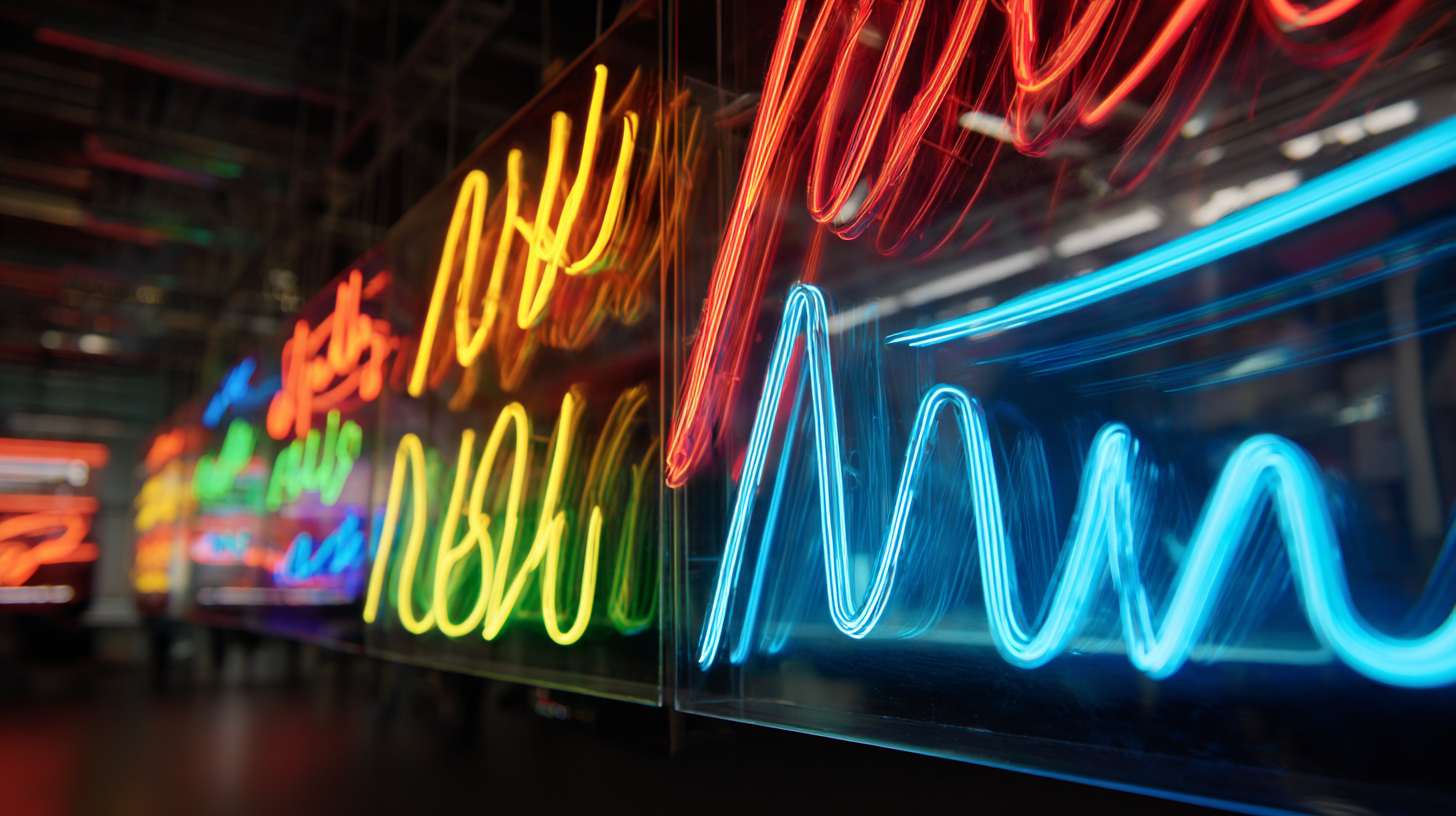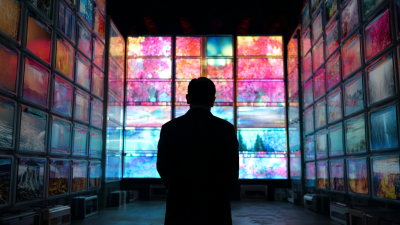



In the ever-evolving landscape of modern advertising, "Light Signs" have emerged as a pivotal element that enhances brand visibility and customer engagement. According to a report by the Sign Research Foundation, businesses that utilize illuminated signage can experience a remarkable increase of up to 50% in customer foot traffic. Furthermore, data from the International Sign Association indicates that nearly 76% of individuals enter a store they have never visited before simply due to its signage, with lighted signs being among the most effective. This phenomenon is primarily driven by the scientific principles of light and color perception, which significantly influence consumer behavior. As the competition intensifies, understanding the intricate relationship between light signs and consumer attraction becomes essential for advertisers aiming to capture attention and drive sales.

The role of light in modern advertising strategies cannot be overstated; it serves as a powerful tool to capture attention and convey messages effectively. Smart use of illumination can transform ordinary spaces into vibrant, engaging environments that draw in potential customers. For instance, LED displays and dynamic lighting techniques can enhance storefront aesthetics, making products more appealing while creating a memorable brand experience. This visual engagement often leads to longer dwell times, increasing the likelihood of consumer interaction with the advertisement.
Furthermore, light color and intensity can influence consumer emotions and behaviors. Warm tones may evoke feelings of comfort and relaxation, encouraging customers to explore and engage, while cooler shades might instill a sense of urgency or modernity. Advertisers are increasingly incorporating these psychological principles into their marketing strategies, understanding that the right lighting can change a consumer’s perception of a brand. By leveraging innovative lighting technology, businesses can effectively highlight their products and services, ensuring they stand out in a crowded marketplace.

The interplay of color and intensity of light holds significant sway over consumer behavior in modern advertising. Various studies indicate that different colors evoke distinct emotional responses and perceptions about a brand or product. For instance, warm colors like red and yellow are often associated with excitement and urgency, encouraging impulse buying. In contrast, cooler colors such as blue and green promote a sense of calmness and trust, which can lead to longer decision-making processes but ultimately more satisfied consumers. Advertisers strategically utilize this understanding to create engaging visual experiences that resonate with target audiences.
Moreover, the intensity of light plays a crucial role in shaping consumer moods and promoting desired behaviors. Brighter lighting tends to energize and attract consumers, making environments feel more inviting and stimulating exploration. Conversely, softer lighting can create a cozy atmosphere, encouraging relaxation and contemplation, often seen in upscale retail settings. By manipulating both color and intensity, advertisers craft environments that not only capture attention but also enhance the overall shopping experience, influencing how consumers interact with products and brands. This nuanced approach reflects a sophisticated understanding of psychological principles that drive purchasing decisions.

Light signs have become a pivotal component in branding and marketing strategies, effectively capturing consumer attention and driving engagement. According to a study by the Sign Research Foundation, businesses that utilize signage experience a 10% increase in customer engagement. This rise can be attributed to the visual appeal of light signs, which are not only eye-catching but also evoke emotional responses, thereby enhancing brand recall.
Utilizing innovative light sign designs can set a brand apart in a saturated market. For instance, LED technology offers versatility; brands can easily change messages or adapt designs based on promotional campaigns. Research by the International Sign Association indicates that nearly 70% of consumers believe that sign quality reflects the quality of a business, underscoring the importance of well-designed light signs in communicating brand values.
**Tips:** To maximize the impact of light signs, consider using bold colors and clear fonts that align with your brand identity. Additionally, incorporating interactive elements can further engage consumers, encouraging them to share their experiences on social media, thus amplifying your brand's reach. Consistent branding across all visual signage enhances recognition and builds customer loyalty.
| Dimension | Description | Impact on Advertising | Innovative Uses |
|---|---|---|---|
| Color | Different colors can evoke various emotions and responses. | Helps capture attention and convey brand identity. | Using warm colors for food promotion, cool colors for tech. |
| Brightness | Intensity of light that can be adjusted based on surroundings. | Enhances visibility in low-light conditions. | Dynamic brightness control for night time vs. daytime settings. |
| Movement | Incorporating motion in signage to attract viewers. | Increases retention and engagement rates. | Animated displays during promotions or events. |
| Type of Light | Using LEDs, neon, or other light types for specific effects. | Sets the tone and mood for the brand. | LEDs for sustainability and brightness efficiency. |
| Location | Strategic placement to maximize visibility and impressions. | Ensures maximum foot traffic engagement. | Using rooftop signs or projecting onto buildings. |
The science of visibility plays a crucial role in modern advertising, as brands strive to capture the attention of consumers in an increasingly competitive landscape. By harnessing the principles of light and color, advertisers can create striking visuals that stand out.
Bright colors and unique light patterns can enhance an advertisement's visibility, drawing the eye and engaging potential customers. The use of contrast, for example, can help to differentiate a brand message from its surroundings, making it more memorable and effective.
Moreover, understanding human psychology plays a significant part in the visibility of advertisements. Research indicates that certain colors and lighting evoke specific emotions and behaviors in viewers.
Warm colors like red and yellow can stimulate excitement and urgency, while cooler tones like blue may impart a sense of trust and calmness. By strategically incorporating these elements into advertising designs, companies can influence consumer perception and drive engagement, ultimately leading to higher conversion rates. The synergy between light science and advertising strategies underscores the necessity for brands to continually innovate and adapt in order to maintain visibility and relevance in the market.
Light signs have become a pivotal element in modern advertising, capturing consumer attention in a fast-paced digital landscape. These illuminated displays not only enhance visibility but also create an emotional connection with audiences through dynamic visuals. As many brands look to stand out in an overcrowded marketplace, integrating light signs into advertising campaigns can significantly elevate their brand message.
To effectively integrate light signs into your advertising strategy, consider first the placement and design of the signs. Choose high-traffic locations where the target audience is most likely to encounter them, ensuring the design is visually striking yet aligned with your brand identity. Additionally, incorporating elements of generative AI can enhance your advertising efforts. By utilizing AI-driven insights, you can personalize the content displayed on your light signs, tailoring messages to resonate with different audience segments and driving higher engagement.
Another tip is to leverage the power of multi-channel marketing. Pairing light signs with digital campaigns on social media or through affiliate programs can create a cohesive brand experience. This synergy not only boosts visibility but also encourages consumer interaction, fostering a stronger connection that can lead to increased conversions.






